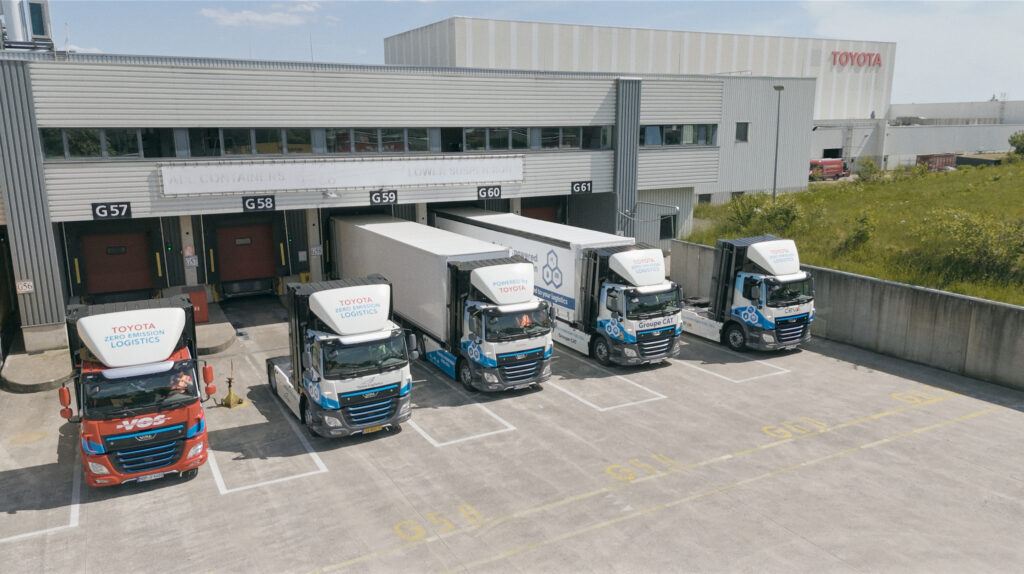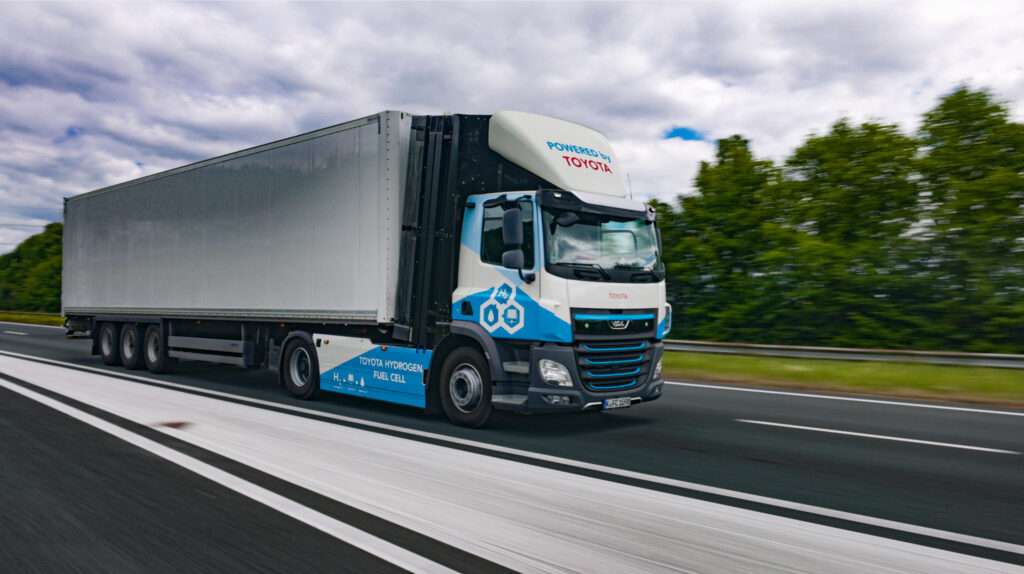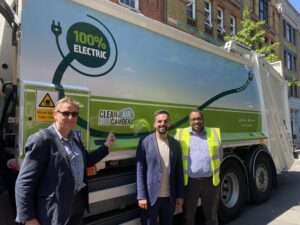The decarbonisation of Toyota’s operations continues with the launch of heavy-duty hydrogen fuel cell trucks on the company’s European logistics routes. The vehicles, built by VDL Groep and equipped with Toyota fuel cell modules, are being used to transport parts and accessories from Toyota’s European Parts Centre in Diest, Belgium, including items that will ultimately be shipped to the UK.
Toyota has partnered with Vos Transport Group, CEVA Logistics, Groupe CAR, and Yusen Logistics to operate the trucks and evaluate their performance. The Diest operation currently processes over half a million parts and accessories daily.
The 40-tonne fuel cell truck’s performance is similar to that of a diesel vehicle. Still, with zero tailpipe emissions, its motor is powered by electricity generated by hydrogen and oxygen in the fuel cell. On a single tank of hydrogen, it can cover up to 250 miles (400km) in real-world driving conditions. The vibration-free electric motor also means there is less local disturbance when the vehicle passes through communities, resulting in a more comfortable ride for the driver.

Thiebault Paquet, Toyota Motor Europe Vice President R&D, said: “This initiative is in line with Toyota’s goal to reach carbon neutrality in its logistics operations by 2040 and also aims to help grow the hydrogen economy.
‘Heavy-duty fuel cell trucks can boost the demand for hydrogen, which is a key contributor, along with the implementation of the European Union’s Alternative Fuel Infrastructure Regulation (AFIR). Together with our logistics providers, we want to gather learnings from the operation of our first hydrogen-powered logistics fleet and further improve the vehicles and operating processes.’

* ’Zero tailpipe emissions’ refers to the powertrain where no greenhouse gases or harmful particles are emitted by the tailpipe while driving. Only H2O is emitted by the tailpipe. Emissions may still exist at other stages of the product lifecycle (extraction, manufacturing, logistics, maintenance, recycling/scrapping…) but also during use (tyres, brakes…) and the production of hydrogen, depending on its source.




